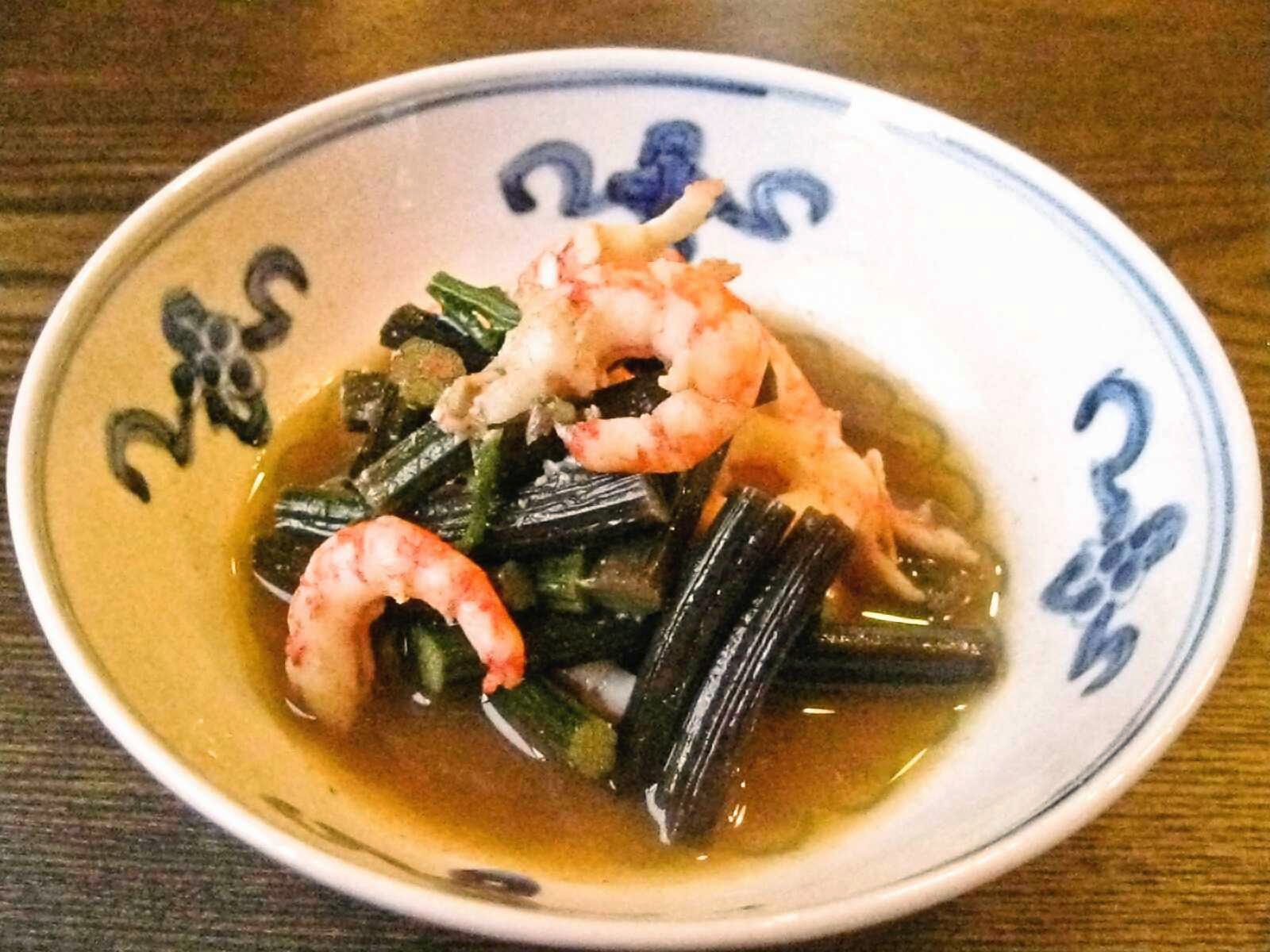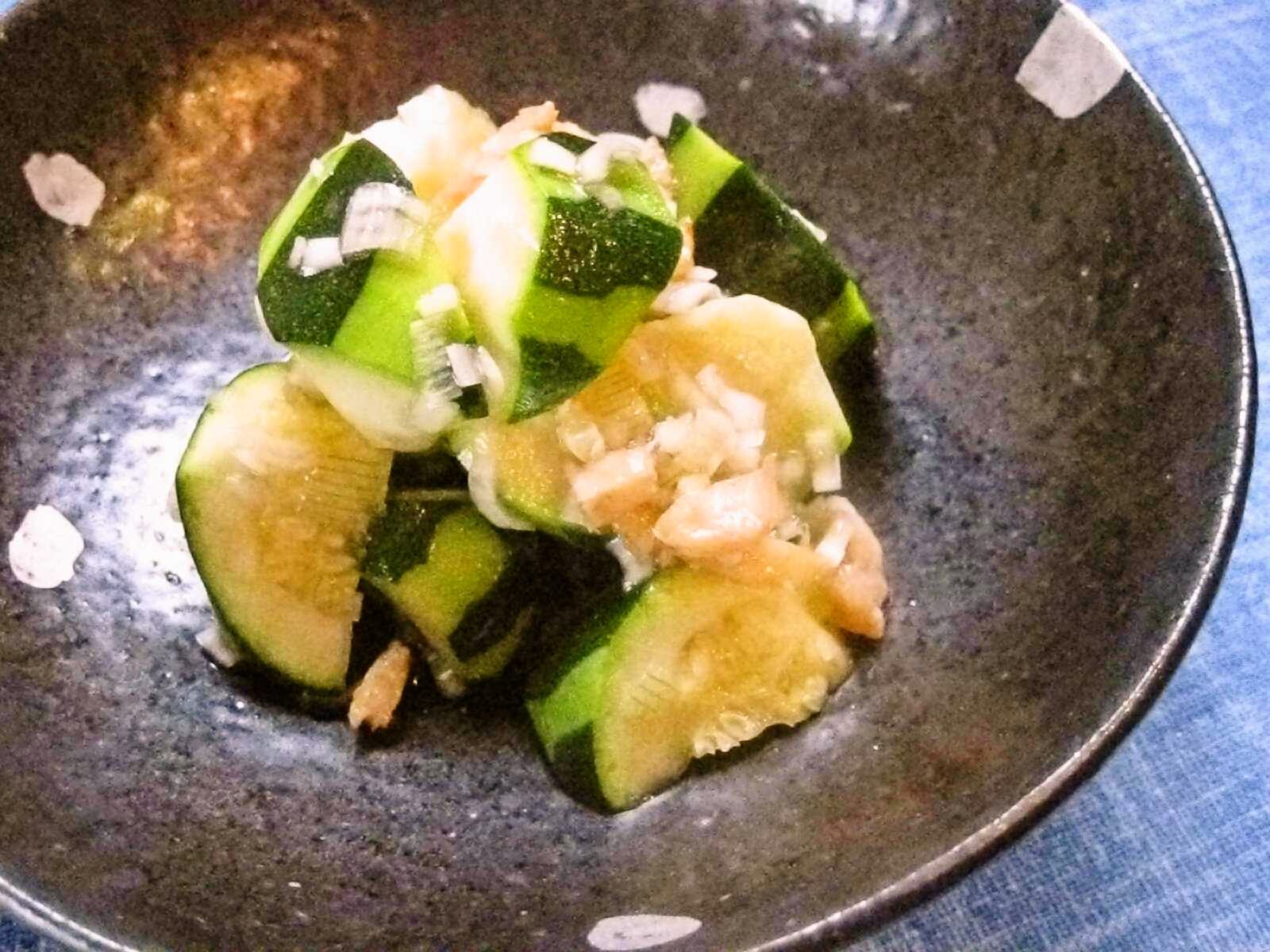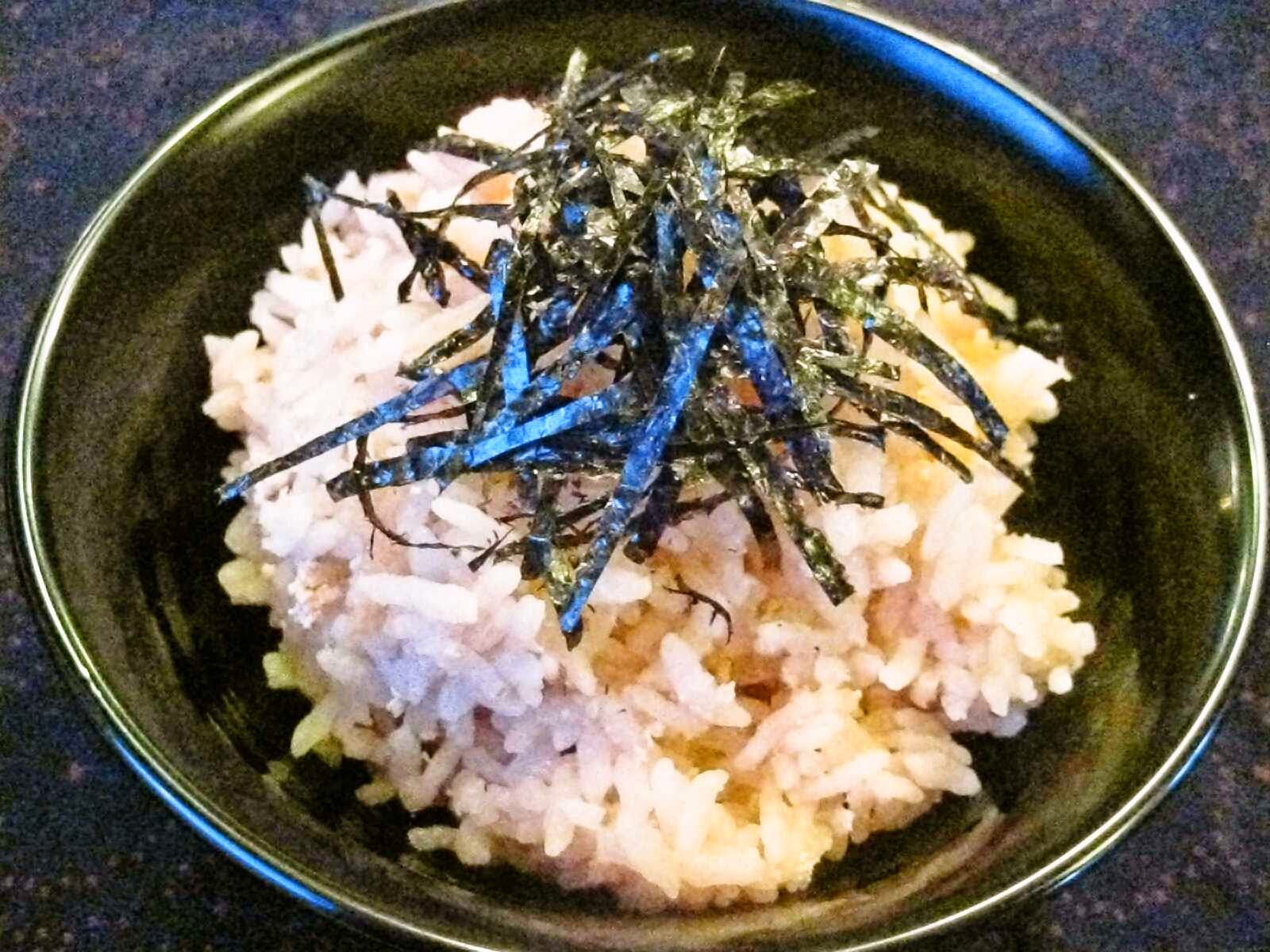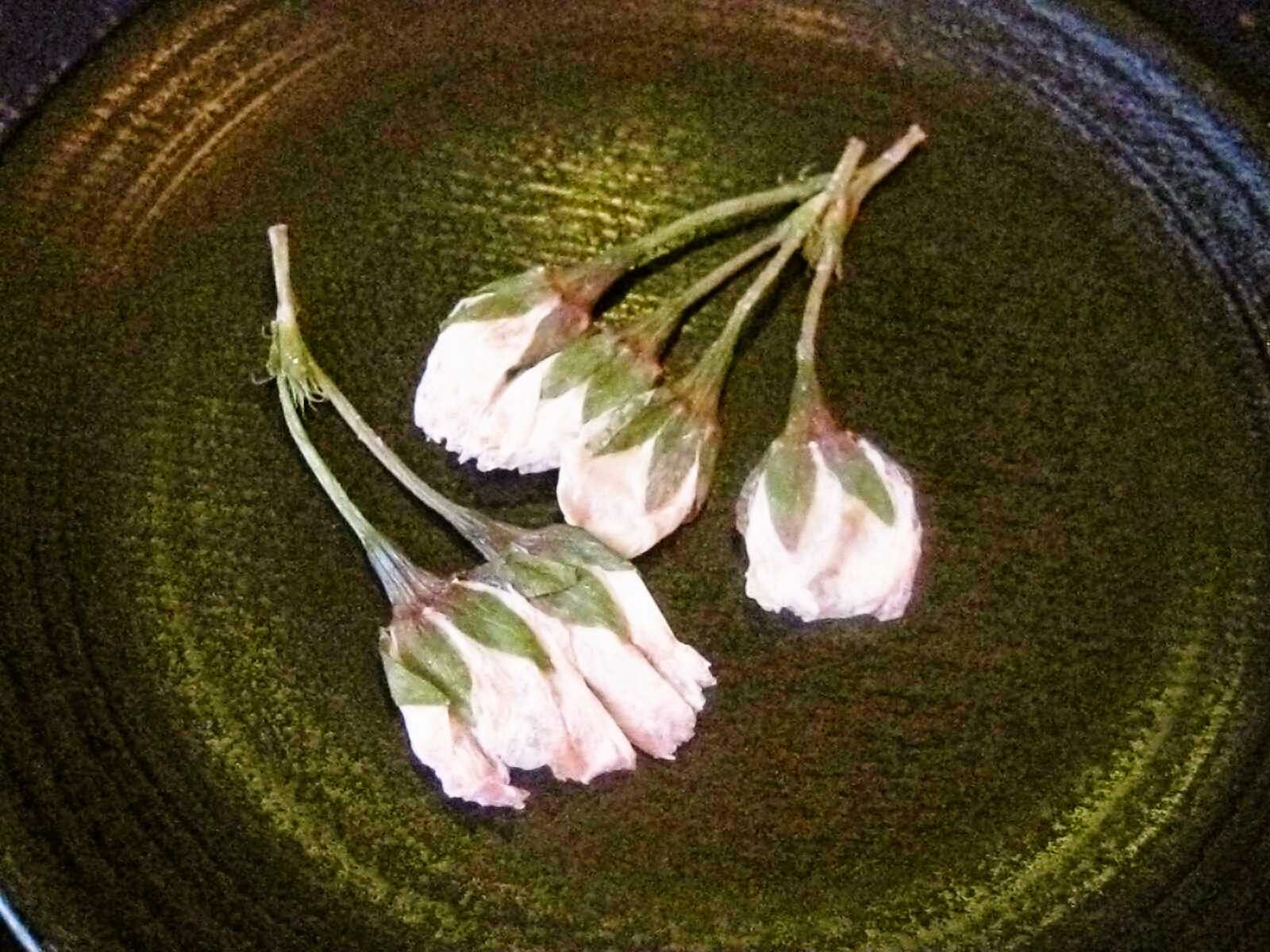All recipes are for 2 servings unless noted. Oil is canola oil and salt is kosher salt.
2013-05-30
Warabi to ebi no nimono / simmered bracken with shrimp
Soy sauce-flavored warabi bracken is paired with softly sweet shrimp. Here, Pacific Northwest coon shrimp add a cheerful color to the dish. To get every last bit of flavor from the coon shrimp, whole shrimp are used below.
Labels:
1 very easy,
30 min,
coon shrimp,
Recipes - Japanese,
reduced sodium,
seafood,
shrimp,
simmer,
vegetables,
warabi
2013-05-29
Zukkiini no shami-ae / zucchini with Chinese dried shrimp
Labels:
1 very easy,
10 min,
bento,
green onions,
make ahead,
no cook,
picnic,
Recipes - Chinese,
shami,
zucchini
2013-05-25
Ohyo no kobujime no temarizushi / mini sushi balls with fresh halibut sandwitched in kelp
Temarizushi, small globes of sushi with assorted ingredients, is another fun way to serve homemade sushi. Here is an example with ohyo halibut made into kobujime. Despite my strong image of temarizushi as being for girls’ parties, this is one of Tom’s current favorite ways to enjoy fresh halibut.
Labels:
120 min (2 hrs),
3 moderate,
fish,
kelp,
kobujime,
kombu,
ohyo,
party,
Recipes - Japanese,
rice,
seafood,
sushi rice,
wasabi
2013-05-23
Satoimo no ebi-dashi surinagashi / shrimp stock miso soup with mashed baby taro root
A miso soup based on very flavorful, aromatic stock made of the heads of coon shrimp, which are found in the nearby waters of the Strait of Juan de Fuca. Satoimo baby taro root softens the taste while slightly thickening the soup.
Labels:
2 easy,
30 min,
coon shrimp,
mash,
miso,
Recipes - Japanese,
satoimo,
saute,
seafood,
shrimp,
simmer,
soup,
vegetables
2013-05-22
Mentaiko no takikomi-gohan / steamed rice with spicy salted pollock roe
Labels:
1 very easy,
60 min,
bento,
mentaiko,
nori,
picnic,
Recipes - Japanese,
rice,
seafood,
seaweed,
steam
2013-05-18
Endomame to koebi no sattoni / quick-simmered English peas and shrimp in broth
The fresh spring taste of English peas goes well with the mild note of seafood. Here is a combination with coon shrimp (small version of spot shrimp), a Pacific Northwest local species. The tiny bodies of coon shrimp are packed with delicious flavor, making this simple dish a delight.
2013-05-17
Warabi no tamagotoji / bracken with egg in broth
Labels:
1 very easy,
10 min,
eggs,
Recipes - Japanese,
simmer,
warabi
2013-05-15
Chuka chimaki / zongzi / Chinese rice dumplings in bamboo leaves (simplified version)
Tango no sekku, one of five traditional seasonal festivals, falls in May in Japan. It is now called Kodomo no Hi or Children's Day, and is celebrated as a national holiday on May 5.
Duanwu-jie, the seasonal festival in Chinese culture, follows the lunar calendar and occurs in June. While zongzi rice dumplings are available year-round, they seem to be everywhere as the festival approaches. The fridge in an apartment I shared with two roommates in Taiwan was literally packed with rice dumplings we received from students and friends as the date neared. Already fully loaded, we continued to be asked, “Have you had zongzi?” The question, of course, was a prelude to giving us more zongzi. People’s generosity was amazing, and since none of us spoke Chinese well enough to politely turn down their offers, more zongji came back to the apartment.
Usually, rice and goodies are separately prepared and assembled when
wrapping with bamboo leaves. This is a simplified version where rice and
goodies are cooked in the same pan.
Duanwu-jie, the seasonal festival in Chinese culture, follows the lunar calendar and occurs in June. While zongzi rice dumplings are available year-round, they seem to be everywhere as the festival approaches. The fridge in an apartment I shared with two roommates in Taiwan was literally packed with rice dumplings we received from students and friends as the date neared. Already fully loaded, we continued to be asked, “Have you had zongzi?” The question, of course, was a prelude to giving us more zongzi. People’s generosity was amazing, and since none of us spoke Chinese well enough to politely turn down their offers, more zongji came back to the apartment.
Labels:
120 min (2 hrs),
4 difficult,
carrots,
dried shiitake,
fish,
freezable,
hoshi-shiitake,
make ahead,
mochigome,
party,
Recipes - Chinese,
rice,
saute,
seafood,
shami,
steam,
stir-fry,
sweet rice,
takenoko,
vegetables
2013-05-14
Ingen to eringi no kinpira / kinpira saute with green beans and king oyster mushroom
Both soft and crunchy – here's a way to enjoy the contrasting textures of green beans and eringi mushroom! Since they are cooked at the same time, eringi also takes on the strong taste of seasonings, while the green beans stay relatively light inside, making this kinpira quite interesting.
Labels:
1 very easy,
10 min,
bento,
eringi,
green beans,
ingen,
picnic,
Recipes - Japanese,
saute,
stir-fry,
vegetables
2013-05-12
Nasu to sakura ebi no itameni / saute-simmered eggplant and sakura ebi dried shrimp
A slightly sweet, strongly flavored eggplant dish. A great companion for plain rice or sake. Tastes good hot or cold.
Labels:
1 very easy,
30 min,
bento,
eggplant,
nasu,
Recipes - Japanese,
sakura ebi,
saute,
simmer,
vegetables
2013-05-10
Sakura no hana no shiozuke / salted cherry blossoms
Preserved cherry blossoms are used as an aromatic ingredient in drinks, sweets and food.
Typically made with pink double blossoms, sakura no hana no shiozuke can simply be salted or salted and marinated in rice vinegar or umezu (the liquid produced in the process of making umeboshi pickled plums).
Below I used red umezu and the semi-double white blossoms of Prunus serrulata 'Shirotae' (commonly known as Mt. Fuji) from my garden. Cherry blossoms are first salted to extract excess water, followed by marinating in red umezu; they are then dried and preserved in salt. The salt used to preserve blossoms takes on their scent, and can be used as aromatic salt in a number of dishes.
Typically made with pink double blossoms, sakura no hana no shiozuke can simply be salted or salted and marinated in rice vinegar or umezu (the liquid produced in the process of making umeboshi pickled plums).
Below I used red umezu and the semi-double white blossoms of Prunus serrulata 'Shirotae' (commonly known as Mt. Fuji) from my garden. Cherry blossoms are first salted to extract excess water, followed by marinating in red umezu; they are then dried and preserved in salt. The salt used to preserve blossoms takes on their scent, and can be used as aromatic salt in a number of dishes.
2013-05-09
Umezu / plum vinegar
While umezu literally means “plum vinegar,” it is not a true vinegar (umezu does not contain acetic acid). Umezu is a salty and sour liquid that comes out of plums in the umeboshi pickling process. During this process, shiro [white] umezu is first produced after plums are salted; after purple perilla leaves are added to color plums, aka [red] umezu is produced. Those who make their own umeboshi at home often keep the liquid for another use. Bottled umezu, both white and red, is available in the vinegar section at some stores (including Uwajimaya in Seattle).
2013-05-08
Goheimochi / grilled rice cakes with sweetened perilla seed, walnut and red miso sauce
A regional favorite snack from the Takayama and Gokayama areas in Gifu and Toyama prefectures. Simple rice cakes made by pounding regular steamed rice are grilled and brushed with sweet, nutty sauce. Goheimochi stalls are found here and there in and around these tourist destination towns in the mountains. I almost always had one every time I visited these areas -- it tasted so good in the open air with majestic mountains and rivers in the background or while browsing streets and alleys surrounded by wooden buildings hundreds of years old.
Labels:
120 min (2 hrs),
3 moderate,
egoma,
grill,
Recipes - Japanese,
rice,
simmer,
snack,
steam,
walnuts
2013-05-05
Ohyo to gobo no misoshiru / miso soup with halibut and burdock root
This very simple combination of white-flesh fish and burdock root tastes so good in miso soup made with kobu-dashi kelp stock. The recipe originally is for tarajiru pollock soup, a regional specialty of Asahimachi at the east end of Toyama Prefecture.
Labels:
2 easy,
30 min,
blanch,
fish,
gobo,
Recipes - Japanese,
seafood,
simmer,
soup,
vegetables
2013-05-04
Hoshi-kaibashira-iri chukagayu / Chinese rice porriage with dried scallops
This somewhat thick, flavorful rice porridge is tasty and gentle on the stomach. It also warms your body from the inside. Dried scallops give it a powerful boost.
Labels:
1 very easy,
120 min (2 hrs),
Recipes - Chinese,
rice,
simmer
2013-05-03
Yasai sutokku / vegetable stock
Made without herbs, this is a versatile stock for Asian and other dishes. Add carrot ends and other firm vegetable trimmings as well as onion/shallots skins for additional flavor. The idea of first grinding key vegetables is adopted from a Japanese chef, Miyuki Igarashi, who specializes in Chinese dishes.
2013-05-02
Tom cooks 12. Nan (naan flatbread)
“What is that?”
I couldn’t help myself; the words just exploded from my mouth.
I had made too much naan dough the night before. Naan tastes best when just out of oven, so we decided to make the remaining portion when we finished up the leftover toor dal dish and palak paneer.
I fully trusted Tom, who has more experience baking bread, to flatten each ball and bake them.
 Well, it did taste like naan.
Well, it did taste like naan. 2013-05-01
Warabi no karashijoyu-bitashi / bracken marinated in Japanese mustard soy sauce
Labels:
1 very easy,
10 min,
bento,
marinate,
no cook,
Recipes - Japanese,
vegetables,
warabi
Subscribe to:
Posts (Atom)
















